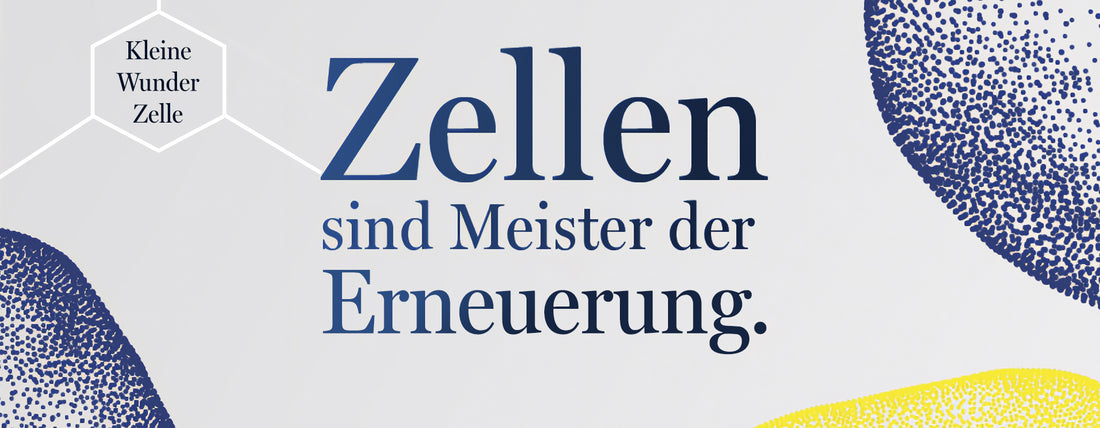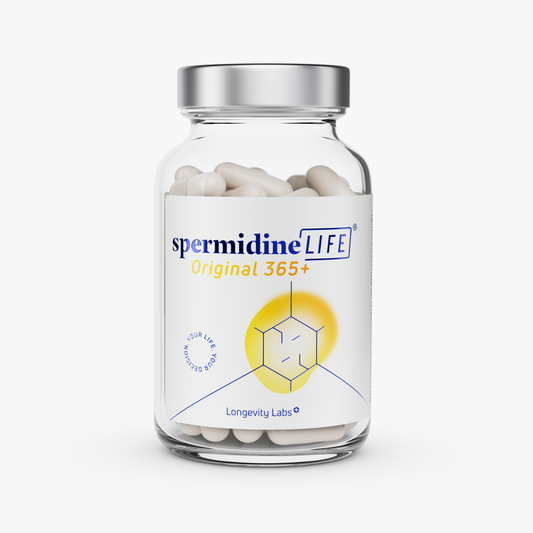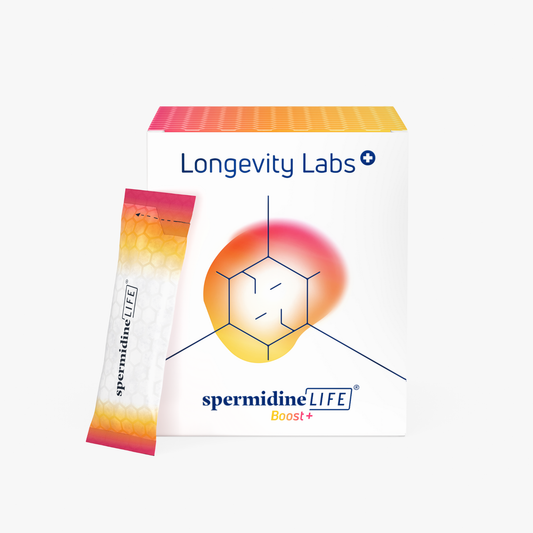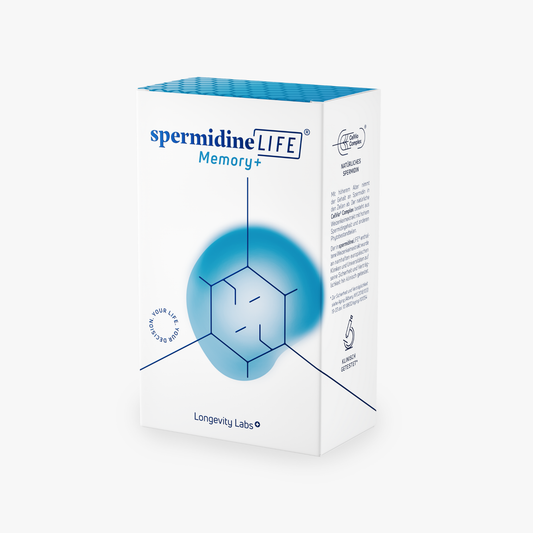
The Cell Makes Everything New: Cell Competence Renewal
Science, TLL LongevityLabsRenewal and Easter simply fit like a glove. So today we bring you the third and final expertise of our cells: renewal. Here, too, our cells are true masters of the art. However, we (unfortunately) often have a negative influence on their natural abilities.
Today we reveal the greatest secret of mankind. Because we - or rather Nina Ruge and Dr. Dr. med. Dominik Duscher - have deciphered it, the secret of life: our cells can develop and renew and thus ensure our existence.
No, joking aside, we have known this for a while now. Our cells - especially our embryonic stem cells - have the ability to develop into all the cells that exist in our bodies and that are needed to form our adult bodies. Therefore, their ability to transform is called "pluripotent" or multi-tasking.
From birth, however, our cells lose this ability. The adult stem cells - as they are then called - can only give rise to cells of a single organ, for example skin cells, fat cells or bone marrow cells. They are therefore referred to as "multipotent" or multigenerated. They form the required cells of the organ where and how they are needed. These formed cells, however, are purpose-bound and are therefore called "unipotent".
Adult stem cells thus represent, as it were, our spare parts store. They produce the replenishment of organ cells that we need due to controlled cell death and are thus true masters of division. An eternal cycle of renewal, at least in theory. Because our adult stem cells are also affected by the aging process, as Dr. Duscher, MD, and his team have been able to demonstrate. They become tired, sluggish and eventually refuse to serve. So what can we do when our supply runs out?
Research progress
Shinya Yamanaka of Kyoto University, addressed this question. His answer: if we run out of multipotent stem cells, we simply replenish them with pluripotent ones. In 2006/2007, he was the first to use viruses to restore unipotent cells to the pluripotent state of embryonic stem cells. He thus flicked the "reset" switch, so to speak, and the resulting "induced pluripotent stem cells" - or iPS cells for short - were able to develop again into any cell needed in the body and provide new replacements. His research even earned him and colleague John Gurdon the Nobel Prize in Medicine in 2012. Unfortunately, however, it was not crowned with lasting success, as it turned out that the iPS cells created were more prone to degeneration and thus cancer.
Where they failed before, Timo Otonkoski and his research group in Helsinki paved a promising new path for science in 2018. They developed a gene scissor - CRISPR/Cas - that can be used to cut genes from DNA and insert new genes. Thus, in human skin cells, they were able to activate the naturally existing gene regions responsible for the pluripotent capabilities of embryonic stem cells. However, we are only at the beginning of research here and will probably have to be patient until we can see real applications here.
What does this mean for us?
So we are back - at least for the time being - to our adult stem cells and their aging. If we can't replace them, the question remains whether we can prevent or slow their deterioration. To do so, however, we must first address the question of why they fatigue in the first place. The reason is simple: the more often our stem cells duplicate or renew themselves, the more difficult this process becomes for them. With each of these duplications, our stem cell has to duplicate 3.3 billion base pairs, and things can quickly go wrong. So about one in every 1 million base pairs is inserted incorrectly. Which leads to each of our cells suffering about 100,000 DNA damages every day.
An error rate that keeps our repair systems on their toes. They are responsible for repairing damaged DNA or - if repair is no longer possible - for sending the stem cell to controlled cell death, or apoptosis. So far, this is a well thought-out system of nature, which also works wonderfully.
However, it becomes a problem when oxidative stress, free oxygen radicals or exogenous factors such as UV radiation, chemical toxins or viruses additionally increase the failure rate, so that our repair systems are simply overwhelmed and can no longer cope with renewal and transformation.
The result
Damaged cells are no longer repaired or sent to cell death. Instead, broken cells accumulate in our bodies that are no longer capable of dividing due to their DNA damage - caused by too frequent divisions or external influences - the so-called senescent cells. They were first discovered in 1960 by Leonard Hayflick, who was ridiculed for his discovery at the time.
Today, things look very different. Today, we are aware of the danger posed by senescent cells. Although they are no longer capable of division, they are still highly active. They produce hundreds of proteins, such as the control proteins cytokines. With their messages, they can still influence neighboring cells, for example by triggering inflammatory responses.
To a certain extent, the senescence of cells is intended by nature to make it easier to identify and break down harmful cells. However, as we age - more specifically, after the age of 50 - senescent cells accumulate in clusters and block the effective processes of our cells due to their number and the accompanying amount of erroneous signals.
Conclusion
So the fact is: too many senescent cells are bad for us and our body. Consequently, we have to make sure that the broken cells are stimulated to regenerate so that they can do their job again as renewed cells. And this is where a small protein comes into play, whose research earned Gregg Semenza, Sir Peter Ratcliffe and William Kaelin the 2019 Nobel Prize in Medicine: the Hypoxia-Inducible Factor - or HIF for short.
This HIF protein is found in every one of our cells. It is, in effect, a nature-created, oxygen-dependent time bomb. In what way? Well, quite simply. If there is enough oxygen in the cell - an indication of a balanced, calm state of our body - the HIF protein is knocked out by the oxygen in the cell. However, if a stress situation occurs - the oxygen in the cell decreases - the HIF molecule can migrate unhindered into the cell nucleus and trigger so-called gene expression - a firework of protein production for over 300 cell processes that starts the process of cell regeneration. Thus, the HIF protein is virtually the captain of a fleet of signaling chains to start cell renewal.
Consequently, we can decisively control the renewal of our cells via this small protein. Currently, scientists worldwide are busy researching in more detail how to act on this protein in order to force an appropriate reaction. What we can do in the meantime, however, is to reduce negative factors such as oxidative stress, free oxygen radicals or exogenous factors such as UV radiation, chemical toxins or viruses and to stimulate our cells to renewal and autophagy.
What's next
In any case, we are very excited to see what else researchers will uncover in this field. Whether this is returning our cells to a pluripotent state of embryonic stem cells, or influencing the HIF protein, the potential applications would be sheer enormous - from treating and curing disease to slowing the aging process and preserving youth.
In any case, we are convinced that a cellular competence that has already been awarded a Nobel Prize in Medicine twice in the last 10 years can only be highly relevant for the future of our society. And this shows once again the extraordinary importance of ageing research and cell renewal research in our time.






